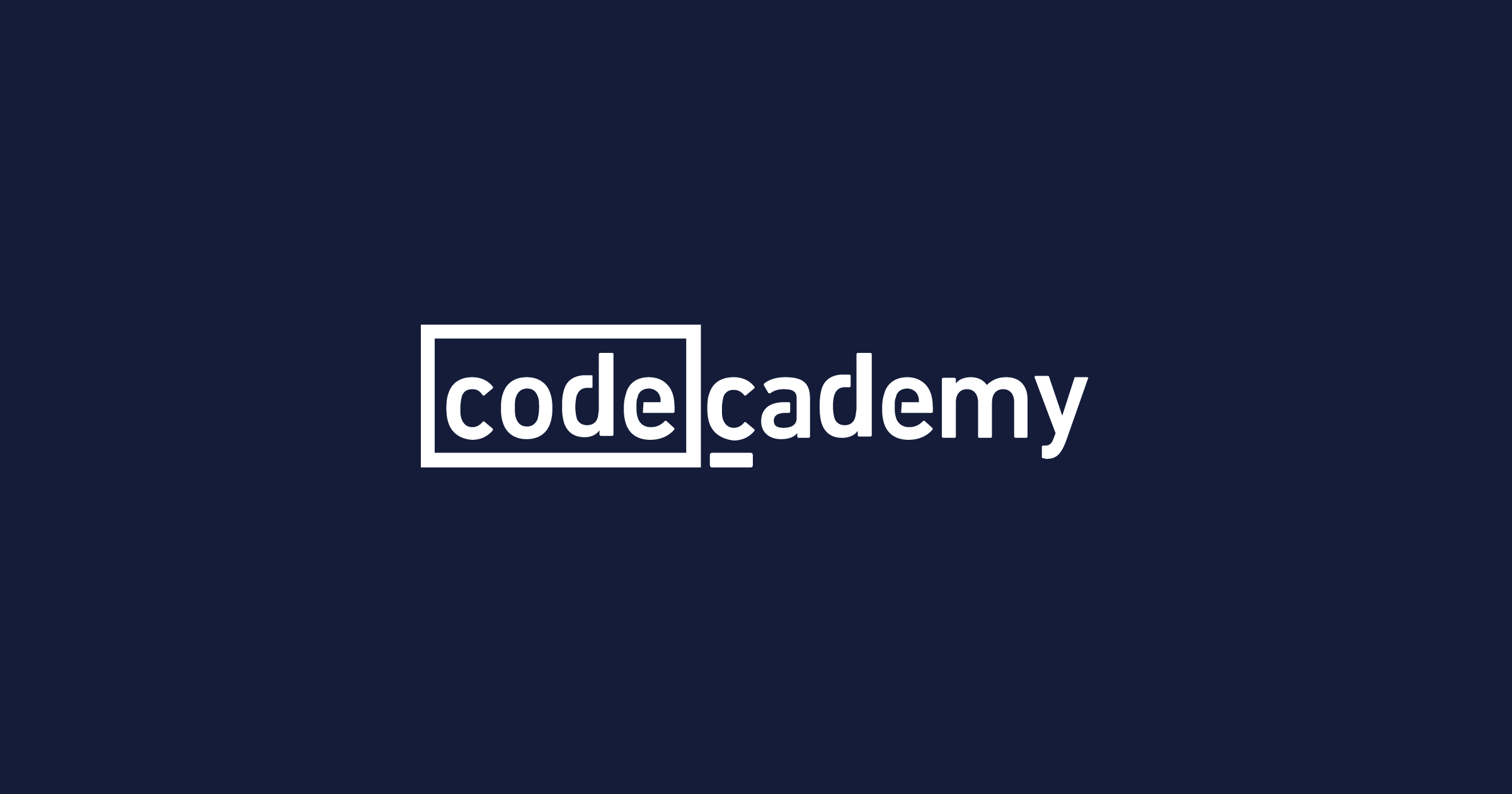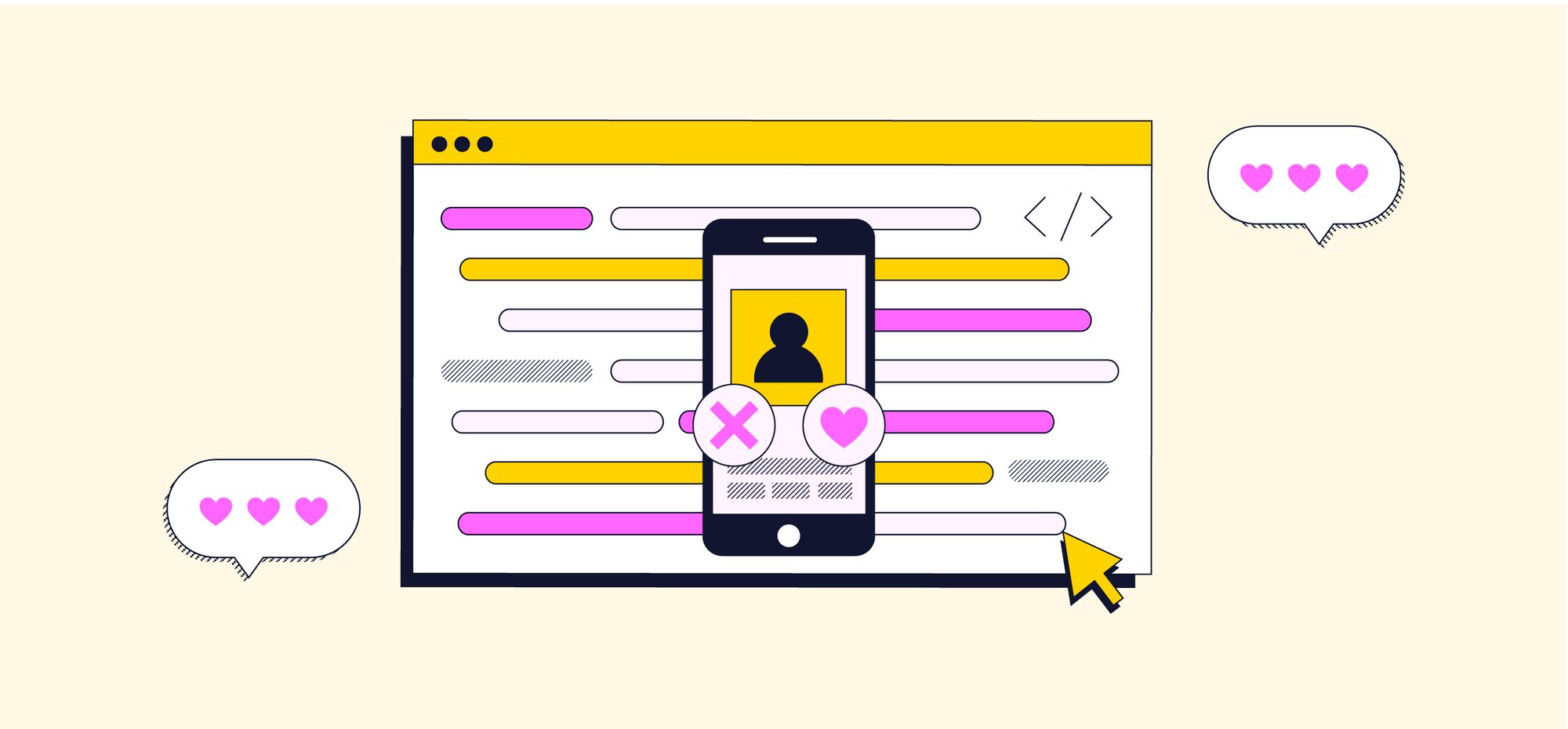If you’re single and swiping on a dating app, it’s romantic to think that fate will lead you to a potential partner — and while that might be true, it’s also a matter of code.
Since OkCupid and Tinder came on the scene in the early 2010s, using dating apps to find a partner has become the norm: Three in 10 U.S. adults say they’ve used a dating app, and 39% of online daters have landed a committed relationship or marriage through an app, according to a 2020 Pew survey. Put another way: There are a lot of dating app users out there. So how do these apps actually work?
At its core, a dating app is just a mobile messaging application that connects users who express mutual interest, according to Ben Stone, a senior curriculum developer at Codecademy. “That’s really the technological innovation that a dating app has: It essentially prevents spam messages from people that you’re not interested in,” he says.
The dating app’s proprietary matching algorithms determine how profiles are presented to users based on a variety of weighted metrics and preferences, like location, common interests, and even photos, Ben says. (In other words, that’s how the “magic” happens.)
Feeling inspired to make your own dating app? You’ll need to know a programming language for mobile apps, like Swift, Java, Kotlin, or React Native, Ben says. If you’re focused on iOS apps, check out our Build iOS Apps with SwiftUI skill path, which gives you the tools you need to build an app and publish it on the App Store.
In addition to a front-end that allows people to navigate the app on their phones, you also need a back-end to store messages and user profiles, Ben says. You can make your own database using PostGreSQL or MongoDB, and then use a server that connects to the database, like Node or Ruby on Rails. There are also existing services that connect the front-end and back-end, like Firebase. Our new course Connecting Front-End to Back-End covers how front-end and back-end technologies interact.
Last but not least, you need a unique idea that will get people to use your app. Today, there are tons of dating apps tailored to specific personalities and niches — from a dating app for cat lovers to ones for the LGBTQ+ community. For some inspiration, here’s how a handful of popular dating apps were developed.
Tinder
Back in 2012, Sean Rad and Justin Mateen won a hackathon with an idea for an app that would revolutionize the way people meet online, matching them based on location and mutual interests with just a swipe of a finger. Now, Tinder is one of the highest-grossing non-gaming apps in the world, with more than 430 million downloads.
Tinder made the swipe gesture a fixture in online dating: Swipe right on someone’s profile if you like them, or swipe left if you’re not interested. If both users swipe right, it’s a match, and you can start chatting. “We always saw Tinder, the interface, as a game,” Rad said in a 2014 interview with Time.
Bumble
Bumble is like Tinder’s woke younger sibling — in fact, it was launched by a Tinder co-founder Whitney Wolf Herd.
Wolf Herd doesn’t come from a computer science background, and has said she’s never written a line of code. But her idea for Bumble was intriguing: Empower women to “make the first move” and start a conversation, defying outdated heteronormative stereotypes about dating. Once there’s a mutual match between users, one person has “first move” privileges. If they don’t start a conversation, the match expires after 24 hours.
Bumble went public in early 2021 after raising $2.2 billion in an initial public offering.
OkCupid
OkCupid is kind of the O.G. of dating apps. In 2003, four math majors at Harvard launched the website, and in 2011, OkCupid became the first major dating site to develop a mobile app.
“The tricky part in designing it was figuring out how to take something mysterious, human attraction, and break it into components that a computer can work with,” OkCupid co-founder Christian Rudder said in a TED-Ed Talk. “The first thing we needed to match people up was data, something for the algorithm to work with.”
OkCupid users answer questions — with topics ranging from political views to favorite pizza — that are then compared to other users’ responses to pair prospective matches.
Hinge
Hinge started off as a Facebook Canvas app built within the social network’s frame, that connected people based on their mutual friends.
“Computers are something I really threw myself into as a kid. I love to code,” Hinge founder Justin McLeod told Guy Raz on the podcast How I Built This. “So I decided to build an application that would allow people in the class [at Harvard Business School] to list their friends on Facebook. And if two people matched it would alert them.”
Raya
Often referred to as “Tinder for Celebrities,” you have to apply to join Raya, the exclusive, private dating app that launched on iOS in 2015. The reason for Raya’s strict vetting process is “to foster a community where all members feel comfortable and their privacy is protected,” according to Raya’s terms of service.
The app, which costs $9.99 a month, is intended for high-profile members who only want to mingle with a curated selection of single people. As Raya founder Daniel Gendelman put it in an interview with The New York Times: “I tried to solve a big problem for a small amount of people.”









